RESPONSIBLE DOG OWNERSHIP: TIME FOR A REVOLUTION?
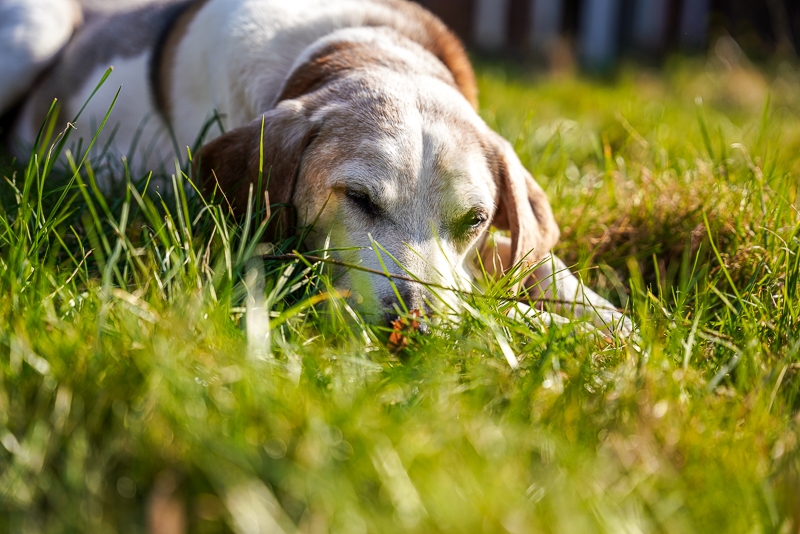
I’m nestled into a tangle of roots below a riverbank on the periphery of the Yorkshire Dales National Park. In the river 25 feet from me is a dipper, resplendent in the afternoon sunshine. Fighting the current seems like hard work, and she dives and rises before retreating to a rock for a rest. I’ve picked my way down a steep, narrow path to drop into a small rocky beach where I find serenity. Two oyster catchers turn over the rocks further downstream, mallards glide by with the flow.
I hear the oystercatchers’ piping alarm call and seconds later a spaniel crashes down the bank and onto the beach. Its owner arrives and throws a ball far into the river, directly at the rock where the dipper is busy getting her dinner. As the dog careens after the ball the spell is broken.
The dipper darts off upstream, her feeding disrupted. A kingfisher drops from his perch by the nesting burrow he’d been excavating in the far bank and flies off in the opposite direction. Gulls and crows that were feeding and collecting nesting material take off. The oystercatchers watch on high alert.
The owner throws the ball again and again, the dog barking incessantly. They both make their way up the narrow strip of stones, wildlife scattering in their wake.
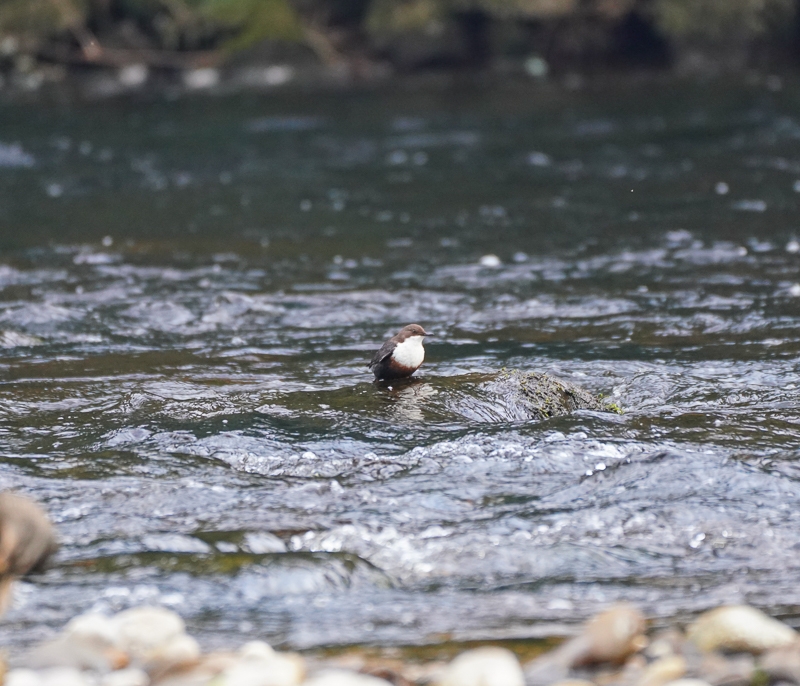
When they finally leave, it takes a while before any wildlife returns and re-settles.
It’s a pattern of behaviour I’ve seen repeated across the country.
On the Isle of Wight, I spent a glorious hour on the downs watching skylarks busily return to hungry chicks with beaks bursting with insects. Skylarks nest on the ground and their populations halved in the 1990s and are still declining. Signs across the downs ask dog owners to keep their pets on leads, but I see labradors bounding through the area the birds are nesting in.
Even the spectacle of our treasured red squirrels doesn’t seem to encourage owners to keep their dogs on leads. When I spent some time with them at a nature reserve, dogs would often come past running free well off the path, the squirrels scattering into the canopy.
Cotgrave Country Park in Nottingham has several ponds, all with signs explaining the fragility of the habitat and politely requesting that dogs not be allowed to enter the water. Most days, you’ll see dogs splashing through this delicate ecosystem, raising birds from the reeds, trampling frogspawn, disturbing fish. The purpose-built dog pond is largely ignored, much like the signs.
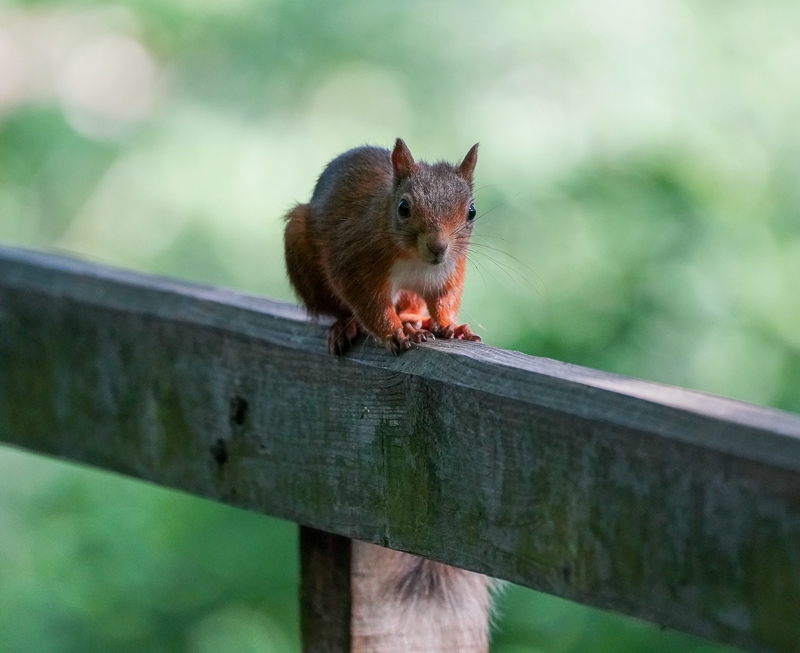
Many of our beaches restrict dog access at certain times of year. Primarily to protect other people from dog poo, this measure would also lend some protection to shore habitats and ground-nesting coastal birds like oystercatchers and plovers, if only anyone listened. I’ve sat on many a ‘dog free’ beach during restricted months and seen dog owners allowing their dogs to run free off the lead, well out of their sight.
I’m not the only one who sees the disruption caused by dogs. On BBC Springwatch this year, we watched an unsupervised dog destroying avocet eggs. An avocet is the RSPB’s logo and this charismatic bird only returned to our shores about 70 years ago, having gone extinct in the UK 100 years before.
Other wildlife watchers are seeing problems too. Sue Cross is a fantastic wildlife photographer who often sees dogs chasing hares and other wildlife in Suffolk. I recently saw a dog trotting along the river path with a dead leveret (a young hare) in its mouth.
Rivers, downs, woodland, parks, beaches, farmland. Nowhere seems to be safe from the harmful and disruptive influence of dogs. What’s going on?
Not all dogs!
I know, I know. Not all dogs are a problem. It’s the owners not the dogs. We love dogs. I dog sit Lenny, the handsome chap in the cover photo, and I get it. Dogs are great for companionship. They’re cute. They can improve their owners’ mental and physical health.
We need to be able to talk about the problems caused by dogs without entering a lengthy disclaimer about the benefits of them. I get it, the country likes dogs.
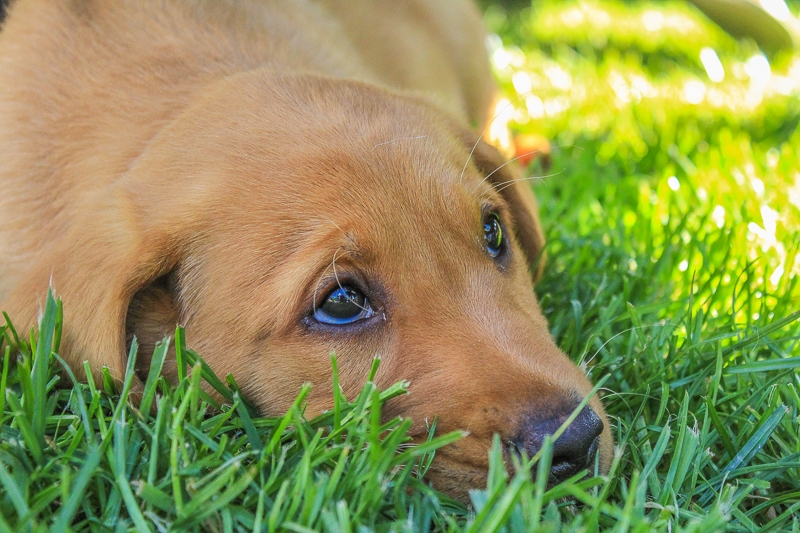
Lots of dog owners are responsible
Yes, and those people are great. It’s impossible to study how many people are ‘good’ dog owners and how many ‘bad’ because it’s subjective but in my experience of wildlife watching we need to stop assuming that responsible dog owners are in the majority.
We also need to re-examine what we think of as irresponsible dog ownership. Many people I’ve spoken to draw the line at deliberate hare coursing and livestock worrying but see no problem with their dogs running far and wide through every type of habitat.
Acknowledging the harms caused by dogs running free is not a direct attack on dog owners just like acknowledging the harms caused by plastic straws wasn’t an attack on everyone who enjoys a cocktail.
What are the problems with dogs running free?
I started with stories of dogs disturbing wildlife because it makes for better connection than a list of issues, but let’s look at a few.
Destroying the eggs of ground-nesting birds
We have lots of ground-nesting birds and they nest in all sorts of locations. Almost invisible, dog owners aren't likely to see their nests but - like we saw on Springwatch - dogs will find them and eat or trample the eggs.
Disturbing wildlife
Any time that any wild creature spends reacting to or fleeing from a dog is time that it is not feeding or raising its family and all energy they spend fleeing needs to be re-gained through food – increasingly difficult in a landscape where there is less food available for wildlife due to our treatment of the land.
Reducing available habitat
Regular disturbance by dogs reduces the habitat that wildlife is safely able to inhabit and breed in; birds can’t build their nests in places where they’re constantly disturbed by dogs.
Stressing wildlife
Dogs stress wildlife out. Stress isn’t good for us and it isn’t good for wildlife either. Repeated stress from dogs can have long-term effects including reduced growth, reduced reproduction, suppressed immune system, and increased vulnerability to disease and parasites.
Killing wildlife
Sometimes, dogs just straight up kill wildlife.
Constantly causing alarm
Research shows that wildlife can sometimes get used to regular human activity – like people walking along a path – because they learn not to view us as a threat. Not so for dogs. Wildlife persistently views dogs as a threat. Even dog wee or poo can discourage wildlife from visiting an area.
Poo
Full of pathogens and parasites, dog poo is a health risk as well as an environmental contaminant and an annoyance to scrape off your shoe.
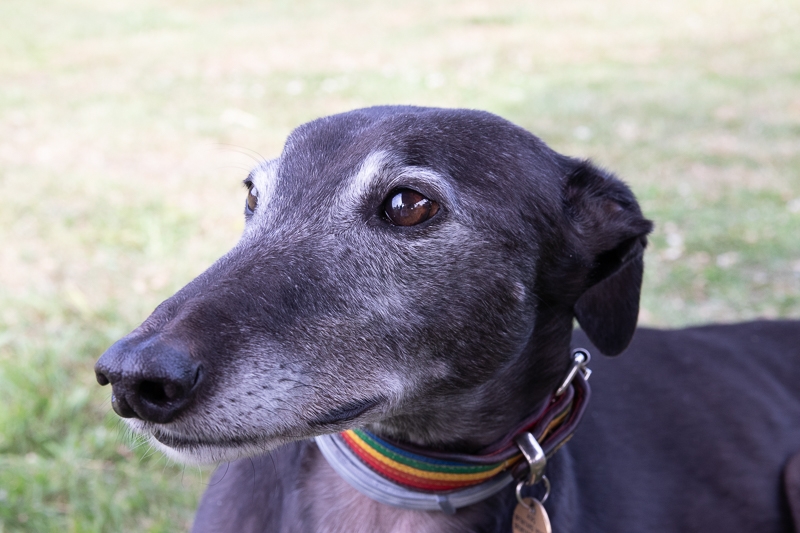
Disturbing people
Incessant barking and disturbance of quiet places isn’t talked about enough when it comes to dog ownership. Dog owners often meet this issue with the view that everyone deserves to enjoy public space; this should extend to people being able to enjoy peace, quiet, and connection to nature.
The science is clear
The long and the short of it is that dogs off lead reduce the carrying capacity of an area. More free running dogs means less wildlife.
If you’re letting your dog run off-lead (outside of designated dog parks) you are contributing to a reduction in wildlife in that area (and due to the dwindling amount of natural habitat, probably for species across the country).
That’s not an easy pill to swallow if you love seeing your dogs running free. If you’re sceptical about any of the above issues, please read this literature review which references a large amount of research on the topic.
It’s easy to get defensive but the responsible thing to do is to take the time to read the outcomes of scientific research.
What does responsible dog ownership mean?
Research has shown that we don’t have a clear idea of what being a ‘responsible dog owner’ means – to the extent that telling dog owners to “be responsible” is next to useless in promoting change.
We need cross-organisation consensus on responsible dog ownership and referenced codes of conduct widely publicised through targeted campaigns.
WHAT DO WE NEED?
Clarity on lead requirements
Current vague notions of responsible dog ownership allow owners to feel entitled to ignore signs and do what they believe fits within their own definition of responsible ownership, which often fails to have full regard for the scientifically proven impact on wildlife.
I find that many people's view of 'responsible dog ownership' boils down to obeying explicit signs that dogs must be on leads in very limited areas.
Dog policies are too lax. How many times have you seen a sign that says that dogs should be ‘kept under control’? What does this mean?
From a wildlife protection point of view, “under control” can only mean walking obediently by your side or within your sight and sticking to the path, with no risk that they will run off to chase wildlife.
Realistically, then, why not just require dogs to be on leads?
All dogs are different, and a few will stay close by and never chase wildlife. But if they’re so good at staying on the path anyway, what difference does it make to clip a lead on for the sake of consistency?
Owners who have extremely well-behaved dogs and who care about wildlife should consider keeping their dog on a retractable lead. It won’t make much difference to their dog’s behaviour, but the messaging it sends to other dog owners (whose dogs may not be so well behaved) is important.
Scrapping the ‘under control’ requirement and replacing it with a lead requirement not only gets rid of grey areas it also makes the policy easier to enforce (both directly and socially).
Given the negative impact on wildlife, dogs being off-lead should be the exception, not the rule.
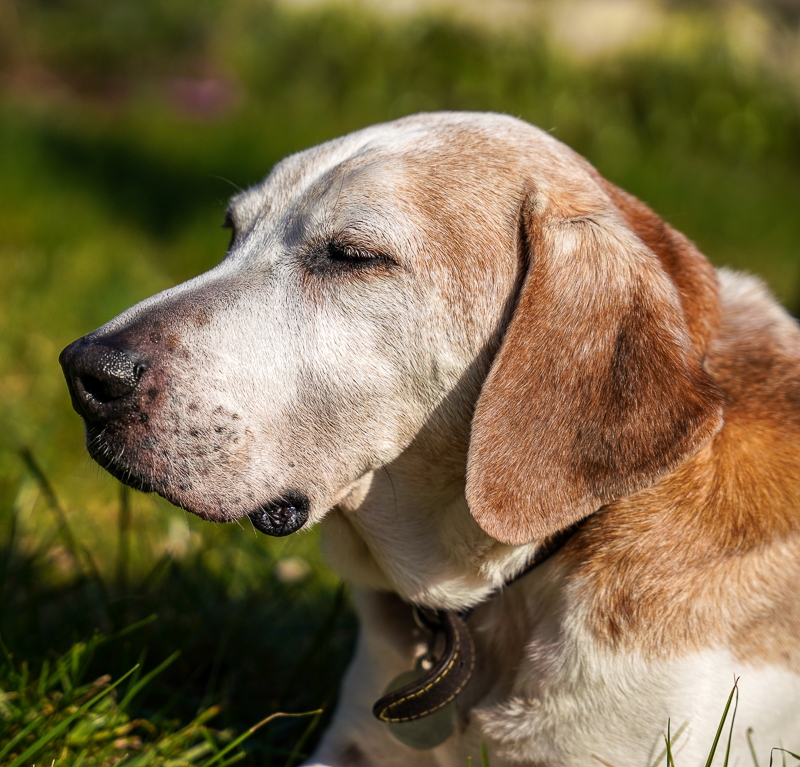
Better explicit consideration from landowners/controllers
I’m often shocked to visit RSPB reserves and see that dogs are allowed and then watch them running through protected habitat.
The literature review I mentioned earlier was carried out by a US landowner as a way for them to consider whether to allow dogs on their land (they decided not to, or to require them to be on leads).
Organisations like local councils, government departments, and conservation organisations need to take a more considered and serious approach to the question of whether dogs should be allowed or leads required. This consideration needs to be published and its outcome implemented.
Where dogs are allowed or not required to be on leads, especially in nature reserves, landowners should make public the reasons why they do not believe wildlife will be impacted or why they have decided to allow a negative impact on wildlife.
Open discussion
Why does broaching the subject of disturbance by dogs feel like heresy? Why do so many dog owners equate concern for disturbance of wildlife with a hatred of dogs or a threat to the very notion of owning a dog?
It feels like the ability of a dog owner to choose to control the behaviour of their dog as they see fit (instead of within the rules set for the location they’re in or general science-based guidelines) is fiercely defended in a disproportionately defensive way.
Many people I know have had their attempts to politely request that someone puts their dog on a lead met with anger and escalation. I rarely feel safe asking someone to put their dog on a lead – even if there are signs everywhere – and this needs to change.
Use of dog-specific areas
When the dipper and kingfisher were disturbed in my opening story, we were ten minutes downstream from a municipal dog park and a bigger beach where people allow their dogs to swim.
When I watched dogs disturbing wildlife in Cotgrave Country Park, there was a dedicated dog pond just around the corner – it’s even signposted.
The idea of dedicated dog areas is to concentrate disturbance in one place so that less habitat is rendered uninhabitable for wildlife and so that fewer animals are disturbed and stressed.
This needs to be communicated to dog owners and owners need to use these spaces.
Education and messaging
Dog owners need to be given information about the impact their dog running free can have on the natural world in a non-confrontational way.
Policies and signs often demand a response without giving a rationale, which doesn’t help owners to understand why keeping their dogs on a lead or not venturing into dog-free areas is important.
Allowing dogs to run free is not usually the result of a wilful disregard for wildlife. In fact, many wildlife-loving people I follow on social media often post content showing their dogs off-lead.
It would be great to see a reduction in photos and videos of dogs off-lead outside of dog parks. It’s hard to get people to comply with requirements to keep their dog on a lead when even conservationists are posting content showing dogs off-lead in areas of important habitat.
Where possible signs should include more information and images, and information about responsible dog ownership (with clear requirements) should be provided by membership organisations, local councils, and the like – this needs to go beyond a basic list and connect with owners in a meaningful way.
Educational campaigns in relation to dog ownership need to be clear, detailed, supported by research, and get the airtime they deserve. Cross-organisational campaigns should be adopted, and membership organisations should find a way to get over their fear of offending members who own dogs by ensuring that the communication is open, honest, and fair.
We’ve seen campaigns to encourage people to go meat-free on Mondays, use metal straws, take their litter home, use peat-free compost, sow wildflowers. We also need campaigns to encourage people to keep their dogs on leads and give wildlife a break.
Allowing dogs to run free harms wildlife. I'm sorry, but it just does. We can't use our love for dogs to make that fact any less true. We can stick our head in the sand and take photos of our gorgeous spaniels bounding across the moor or splashing through a river all we like but it won't change the fact that wildlife is suffering.
We need a revolution in what it means to be a responsible dog owner. For the good of our natural world, we need to ditch allowing our dogs to run free wherever they like the same way we ditched using plastic straws and carrier bags.
Share with your friends
Subscribe to learn more
Join me in exploring our natural world and cultural heritage as we learn how to protect and restore it. Get notified on my latest posts and a monthly newsletter on wider conversation topics for us to chat about.
Recent Posts
If you enjoyed this one, then you might like these too.